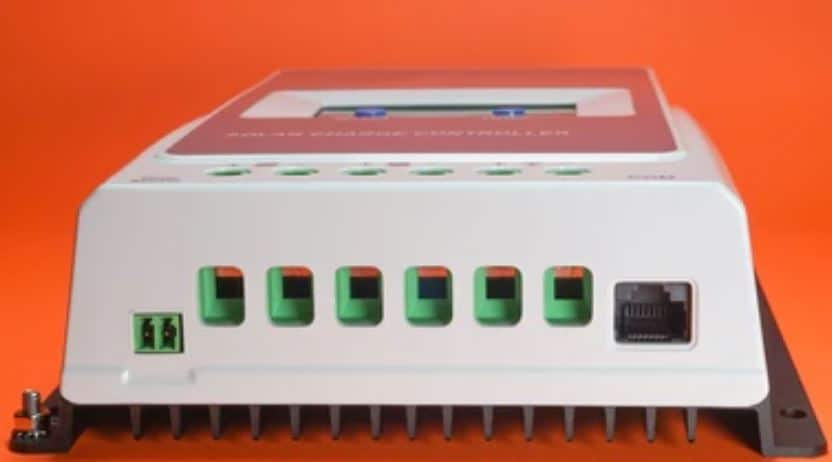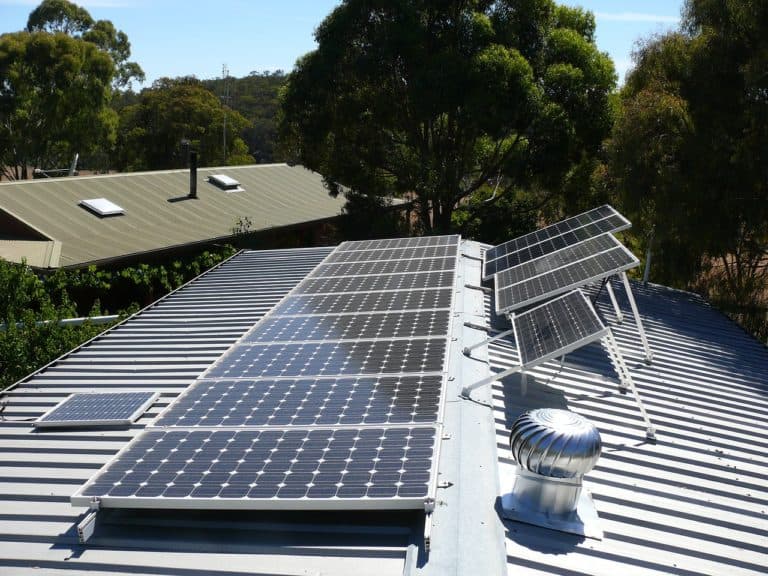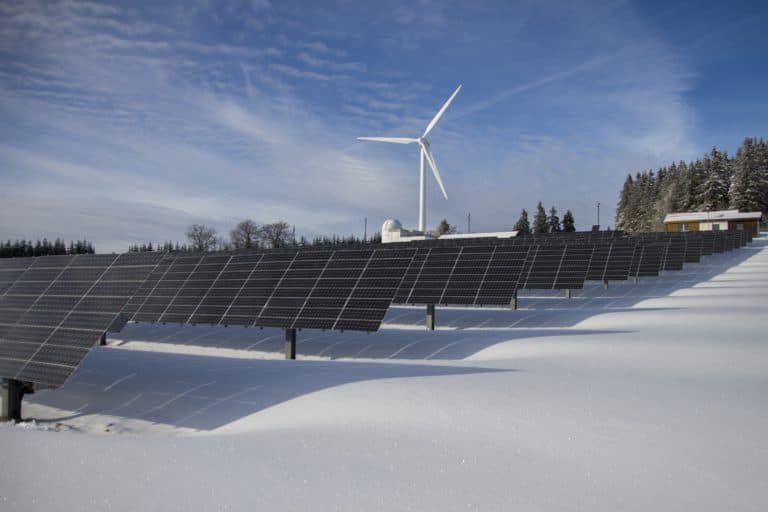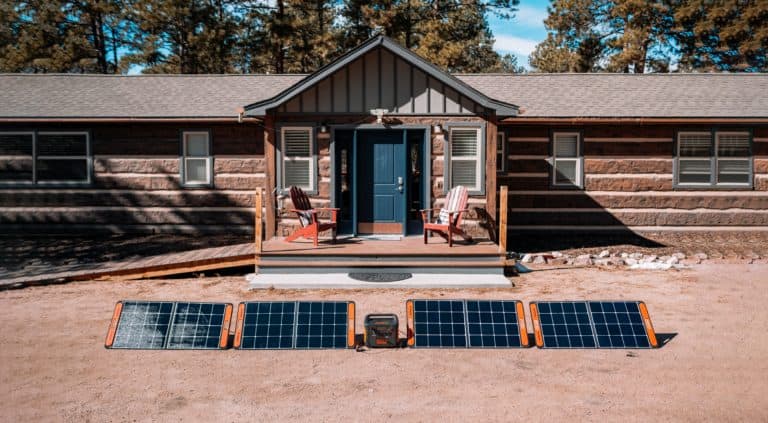MPPT solar charge controllers: A complete overview
MPPT solar charge controllers play a vital role in optimising the efficiency of your solar power system.
As more people become interested in renewable energy sources, it is important to understand the functions of charge controllers.
We will delve into the world of MPPT charge controllers and uncover their significance in sustainable energy systems.
In the end, you will come away with important insight into the critical aspects of MPPT charge controllers.
You will also be better equipped to make informed decisions about optimising your renewable energy system for long-term sustainability and efficiency.
What is an MPPT solar charge controller?
MPPT is an acronym for Maximum PowerPoint Tracker. An MPPT is essentially an efficient DC-to-DC converter used to optimize the power output of a solar system.
An MPPT charge controller allows the solar panel to function at its highest power point, which is the ideal voltage and current for achieving maximum power output.
MPPT charge controllers are responsible for converting the higher voltage DC output generated by solar panels to a lower voltage that is suitable for charging batteries.
These charge controllers essentially restrict the flow of power from your solar panels to your battery bank. In doing so they prevent overcharging and potential harm.
MPPT controllers constantly monitor and adjust their input in order to regulate the current of your solar system.
In a nutshell:
- MPPT optimises power output: An MPPT controller tracks the maximum power point of solar panels, ensuring maximum energy efficiency and savings on electricity bills.
- MPPT protects your battery: The MPPT controller safeguards battery banks against overcharging or discharging issues, maintaining optimal charging levels at all times.
- MPPT regulates voltage: An MPPT controller adjusts its output voltage based on solar panel fluctuations, providing just enough power without causing harm to connected components.
How MPPT charge controllers work
Let’s begin first by explaining what happens without an MPPT charge controller.
Using a non-MPPT charge controller is similar to connecting the solar panel directly to the battery. A conventional charge controller may charge the battery with a voltage determined by the battery’s requirements.
Since a fully charged battery has a higher voltage than an empty one, typically less power is drawn from an empty battery as compared to a full one.
This then leads us to question where our unused power goes when we have empty batteries.
An MPPT charge controller solves this problem by utilising all of the module’s power by controlling the charging state’s voltage of the battery.
The charge controller maintains an optimised level of voltage and current where modules provide maximum output.
For example:
Assuming you’re using a solar panel with a Vmp of 18.3 volts and an Imp of 11.48 amperes, then the power output would be 210 watts (i.e., 11.48A x 18.3V).
An empty 12V battery typically has around 12.2 volts, meaning it would charge at a rate of approximately 140 watts (i.e., 11.48A x 12.2V).
This is significantly less than the maximum output capacity (210 watts) of the module. In order to maximise efficiency, an MPPT charge controller increases both voltage and current to match the I-V curve (or power) of the module as closely as possible during charging.
In this scenario, an MPPT charge controller would allow for almost full utilisation of the solar panel’s potential. This is done by charging at nearly optimal levels: around 18.3 V and up to about 11.48A.
This will also depend on other factors like temperature or shading issues that may impact performance.
MPPT solar charge controllers can achieve up to 30% greater efficiency. This would of course depend on the battery and operating voltage (Vmp) of the solar panel.
As a rule of thumb, it is recommended that you use MPPT charge controllers for higher power systems that utilise two or more solar panels in series or whenever the panel’s operating voltage (Vmp) exceeds the battery voltage by 8V or more.
Recommended MPPT controllers vs. battery voltage options
Since most MPPT charge controllers are highly adaptable you can use them with different battery voltages, unlike battery inverters.
For example, smaller charge controllers ranging from 10A to 30A have the capability of charging either a 12V or 24V battery.
On the other hand, larger capacity or higher input voltage charge controllers are specifically designed for use on 24V or 48V battery systems.
However, some models like the Victron 150V range can work with all battery voltages from 12V to 48V.
In addition, there are high-voltage solar charge controllers such as those from manufacturers that can function on 120V battery banks.
Apart from the current (A) rating, the maximum array size that a charge controller can handle is also limited by the battery voltage.
Using a 24V battery allows for more solar power to be connected to a single 20A solar charge controller compared to using a 12V battery.
The following are the recommended MPPT controllers depending on battery voltage:
- A 20A MPPT charger controller paired with a 12V battery is recommended for a maximum of 260W solar power input.
- A 20-amp MPPT charge controller is recommended for a 24-volt battery system with a maximum solar input of 520 watts.
- A 20A MPPT charge controller is recommended for a 48V battery with a maximum solar input of 1040W.
Note, oversizing the solar array is allowed by some manufacturers to ensure an MPPT solar charge controller operates at the maximum output charge current, provided the maximum input voltage and current are not exceeded!
What you need to know about solar panel voltage
All solar panels have two voltage ratings that are determined under standard test conditions based on a temperature of 25°C.
The first rating is the maximum power voltage (Vmp), which is the operating voltage of the panel.
The Vmp will decrease significantly at high temperatures and may slightly vary depending on the amount of sunlight.
For proper MPPT functionality, the panel’s operating voltage (Vmp) must always be several volts higher than the battery charge voltage under all circumstances, including high temperatures.
The second important parameter of a solar panel is the open-circuit voltage (Voc), which is always higher than the Vmp.
The Voc is achieved when the panel is in an open-circuit state. For instance, when a system is turned off or when a battery has been fully charged and no further power is required.
The Voc decreases at higher temperatures but more importantly, increases at lower temperatures.
Panel voltage Vs battery voltage
To ensure proper operation of an MPPT charge controller in all conditions, you should ensure that the solar panel’s operating voltage (Vmp) or string voltage (if panels are connected in series) is at least 5 to 8 volts higher than the battery charge (absorption) voltage.
For instance, most 12-volt batteries have an absorption voltage ranging from 14 to 15 volts. Hence, Vmp should be a minimum of 20 to 23 volts after considering the voltage drop in high temperatures.
It is worth noting that the actual panel operating voltage is typically about three volts lower than the optimal panel voltage (Vmp).
12V batteries
For 12-volt batteries, the decrease in solar panel voltage caused by high temperatures is typically not an issue.
This is because even smaller 12-volt solar panels have a Vmp (maximum power voltage) range of 20 to 22 volts, which is significantly higher than the standard charge voltage for a 12-volt battery at around 14 volts.
In addition, larger 60-cell (24V) solar panels are also not problematic. This is because they operate within a recommended range of 30 to 40 higher volts.
24V batteries
For 24-volt batteries, there is no issue when connecting a string of two or more solar panels in series. However, problems can arise when only one solar panel is connected.
Most commonly used 60-cell solar panels with a Vmp of 32V to 36V have a higher voltage than the battery charging voltage of approximately 28V.
This becomes problematic on extremely hot days. Temperature increase causes the panel’s Vmp to drop by up to 6V.
The significant voltage drop may cause the solar voltage to fall below the battery charge voltage. This can prevent it from achieving full charge.
To avoid this problem when using only one panel, consider using larger and higher-voltage options. This can be a 72-cell or 96-cell panel.
48V batteries
When charging 48-volt batteries, the system requires a series string of at least two panels. However, they perform better with three or more panels in series, depending on the maximum voltage of the charge controller.
Typically, most 48V solar charge controllers have a maximum voltage of 150 volts. This does allow for a string of three panels to be connected in series.
For larger solar arrays, higher voltage 250V charge controllers can accommodate strings of five or more panels which are much more efficient as they reduce the number of parallel strings and consequently lower current flow.
MPPT controller oversizing
Why you may need to oversize
To account for various losses in a solar system, it is common practice to install a larger solar array. This can be higher than what is recommended by the manufacturer.
This allows the system to generate more power during inclement weather and other conditions that can impact performance.
Factors that contribute to reduced output include poor weather with low irradiation, dust, and dirt accumulation.
Other factors are shading from nearby objects, the improper orientation of panels, and cell temperature de-rating.
In hot summer months, a 300W panel may only produce between 240W to 270W due to power de-rating. This is typically caused by high temperatures.
In addition, depending on location there may be decreased performance during winter months due to lower levels of solar irradiance.
Oversizing the solar array beyond nominal values will help ensure adequate power generation under unfavorable conditions.
How to oversize your MPPT charge controller
Calculating the appropriate size for a charge controller is not as complicated as it may seem. The sizing of charge controllers depends on some factors.
These are typically the current produced by your solar array and the voltage of your solar system.
It is important to ensure that you have a charge controller that can handle the power and current generated by your panels.
Charge controllers are typically available in 12, 24, and 48 volts with amperage ratings ranging from one to 60 amps and voltage ratings between six to 60 volts.
For instance, if your solar system has a voltage of 12 and an amperage of 14, you would require a solar charge controller with at least 14 amps.
However, due to factors such as light reflection causing sporadic increases in current levels, it is recommended to factor in an additional 25%.
This means that the minimum amps required for our solar charger controller would be increased to approximately 17.5 amps which we will round up to 20 amps since they are not sold in fractional values.
In conclusion, for this scenario where there’s a system voltage of 12V and an amperage output rating of 14 amps from our panel(s), we need at least a 12-volt/20 amp rated charge controller.
Do you always need a charge controller?
In general, YES!!!.
Small solar panels with a capacity of 1 to 5 watts usually don’t require a charge controller. If the panel produces 2 watts or less for every 50 amp hours of battery capacity, then you likely won’t need a charge controller.
However, if your panel generates more than that amount, then you will need one.
What to look for in an MPPT charge controller
- Voltage compatibility: Ensure it matches your system’s requirements.
- Battery type support: Check for compatibility with different battery chemistries.
- Ease of installation: Look for a user-friendly interface with clear instructions.
- Durability & reliability: Choose quality components built for longevity under various weather conditions.
Choosing the right MPPT charge controller
When selecting an MPPT solar charge controller you may want to consider several factors. Some of these are battery voltage, solar panel wattage, and budget constraints to ensure optimal performance and longevity.
For those looking for a reliable and efficient brand, the following are popular choices among DIY enthusiasts and professionals alike.
Renogy
Renogy is a well-known brand among both DIY enthusiasts and professionals in the United States. Their selection of solar charge controllers includes models with the MPPT technology to suit different needs and budgets.
Renogy’s reputation for providing top-notch products supported by excellent customer service makes them a popular choice.
Victron Energy
Victron Energy, a company based in the Netherlands, has been producing power conversion equipment since 1975.
They provide a wide range of advanced MPPT solar charge controllers that come with important features. These features can be Bluetooth connectivity, remote monitoring capabilities, and programmable load control options.
These are what make them perfect for complex installations or off-grid systems.
EPEVER
EPEVER is a trustworthy manufacturer that specialises in MPPT solar charge controllers, which are both highly efficient and cost-effective.
These controllers have become increasingly popular among solar enthusiasts due to their advanced features.
Such features like temperature compensation and comprehensive battery protection, ensure the safety and longevity of your batteries.
Phocos
Phocos is also a well-known brand that specialises in manufacturing MPPT solar charge controllers.
They offer a range of models suitable for different system sizes. This makes it effortless to find the perfect controller for your solar setup.
Outback Power
The American company Outback Power specialises in providing renewable energy solutions specifically designed for harsh environments like deserts or coastal areas where corrosion can be an issue.
Their FlexMax series of MPPT solar charge controllers are well-regarded due to their durability, reliability, and ability to handle high input voltages.
Morningstar Corporation
Morningstar Corporation is a top player in the solar charge controller industry, providing MPPT models. Their reputation stems from their durability and exceptional effectiveness.
Morningstar’s products are utilized in diverse residential, commercial, and industrial applications worldwide.
MidNite Solar
MidNite Solar, an American company, manufactures a diverse selection of solar power equipment, including charge controllers.
Their Classic series of MPPT controllers boasts advanced features such as arc fault protection and ground fault protection. These make them an ideal choice for safety-minded users.
Schneider Electric
Schneider Electric is a worldwide leader in energy management solutions. They provide Conext MPPT solar charge controllers that deliver optimal efficiency and extend battery life.
These controllers also offer advanced communication capabilities for effortless monitoring and control.
Steca Elektronik GmbH
Steca Electronics LLC is a renowned German company with expertise in precision engineering. Since 1976, they have been producing high-quality solar electronics.
Steca offers a variety of MPPT solar charge controllers that are designed to provide reliable performance even in harsh conditions like extreme temperatures or fluctuating input voltages from PV panels.
Conclusion
In summary, MPPT solar charge controllers have transformed how we utilise solar energy for diverse purposes.
These sophisticated controllers enhance the effectiveness of solar panels by continually monitoring and optimising power output. This guarantees that every beam of sunlight is utilised to its maximum capacity.
Nowadays, many MPPT controllers are equipped with advanced monitoring and data logging features.
These enable users to access real-time information about their solar system’s performance, such as voltage, current, power output, and battery status.
Some controllers even offer remote monitoring through mobile apps or web interfaces, allowing users to monitor and control their solar systems from anywhere in the world.
This level of monitoring and control improves system reliability and enables proactive maintenance and troubleshooting.
MPPT solar charge controllers are a revolutionary development in the field of solar energy. With the use of MPPT technology, we can fully utilise the power of solar energy and make significant contributions towards a more sustainable and eco-friendly future.
FAQs
Disadvantages of MPPT charge controllers
While MPPT solar charge controllers are more efficient, they come with a higher initial cost and may require proper ventilation for heat dissipation.
The theory behind MPPT charge controllers
MPPT solar charge controllers optimize power output from solar panels by adjusting voltage and current according to changing environmental conditions, resulting in maximum power transfer to batteries.
Is an MPPT charge controller worth the investment?
Investing in an MPPT charge controller is worth it for larger systems with high-voltage panels or those seeking improved efficiency, battery protection, and extended lifespan.






